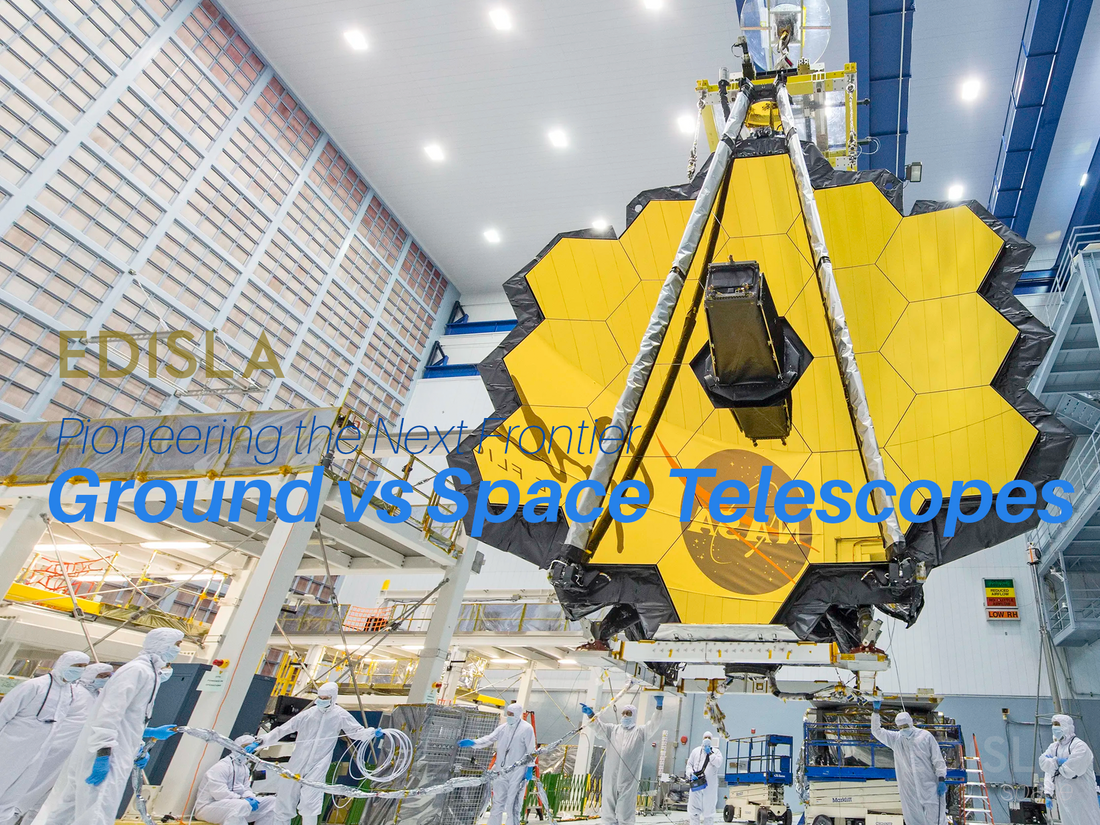
Space-Based vs. Ground-Based Telescopes: Exploring the Universe from Different Perspectives
The quest to unravel the mysteries of the universe has led astronomers to employ two distinct types of telescopes: space-based and ground-based. Each of these remarkable instruments offers unique advantages and faces specific challenges, ultimately contributing to our expanding understanding of the cosmos. In this article, we will explore the differences between space-based and ground-based telescopes and examine how they complement each other in advancing our knowledge of the universe.
Space-Based Telescopes: Reaching New Frontiers
Space-based telescopes are observational platforms that orbit Earth, beyond the interference of our planet's atmosphere. One of the most renowned examples is the Hubble Space Telescope, which has revolutionized our understanding of the universe since its launch in 1990. Space-based telescopes offer several distinct advantages.
Unobstructed View: The absence of Earth's atmosphere provides space-based telescopes with an unobstructed view of the cosmos. Atmospheric turbulence, which causes blurring and distortions in ground-based observations, is eliminated, allowing for sharper and more detailed images.
Access to Multiple Wavelengths: Space-based telescopes can detect a broad range of wavelengths, including those that are absorbed or blocked by Earth's atmosphere. By observing in ultraviolet, X-ray, and infrared wavelengths, space telescopes reveal hidden features and phenomena that are crucial for understanding various astrophysical processes.
Stability and Long Observational Windows: Space-based telescopes enjoy a stable and controlled environment, free from atmospheric turbulence, weather conditions, and light pollution. Additionally, they can observe continuously without interruptions due to daytime, seasonal variations, or atmospheric limitations. This extended observational window enables space telescopes to capture time-sensitive events and conduct long-duration studies.
Challenges of Space-Based Telescopes
While space-based telescopes offer unique advantages, they also face significant challenges:
Cost and Limited Lifespan: Launching and maintaining a space telescope is an expensive endeavor. The development, construction, and launch costs of these complex instruments require substantial financial investments. Moreover, the lifespan of a space telescope is limited by the availability of resources, including fuel and power, as well as potential technical malfunctions.
Maintenance and Upgrades: Unlike ground-based telescopes, which can be repaired and upgraded relatively easily, servicing space-based telescopes is a complex and costly process. Missions like the Hubble Space Telescope's servicing missions have demonstrated the extraordinary efforts required to maintain and enhance the capabilities of these orbiting observatories.
Ground-Based Telescopes: Observing from Our Terrestrial Home
Ground-based telescopes are located on Earth's surface and employ sophisticated optics to capture and analyze celestial light. These observatories come in various sizes and configurations, from small amateur telescopes to large professional facilities like the Keck Observatory in Hawaii.
Cost-Effectiveness and Flexibility: Building and operating ground-based telescopes generally incurs lower costs compared to their space-based counterparts. These observatories can be constructed and upgraded incrementally, allowing for flexibility and adaptation to evolving scientific needs and technological advancements.
Ease of Maintenance and Upgrades: Ground-based telescopes benefit from the advantage of easy accessibility for maintenance and upgrades. Instruments can be repaired, instruments can be calibrated, and new technologies can be integrated without the need for complex space missions.
Adaptive Optics: To compensate for atmospheric turbulence, ground-based telescopes employ adaptive optics systems. These systems use deformable mirrors to counteract the effects of atmospheric distortion, resulting in improved image quality and resolution.
Challenges of Ground-Based Telescopes
Despite their advantages, ground-based telescopes also face challenges:
Atmospheric Interference: Earth's atmosphere introduces turbulence, light pollution, and absorption of specific wavelengths, which can degrade the quality of observations. Techniques such as adaptive optics and site selection help mitigate these effects, but they cannot completely eliminate atmospheric interference.
Observational Constraints: Ground-based telescopes are subject to weather conditions, daytime limitations, and seasonal variations, which restrict their observational capabilities. These constraints can limit the amount of usable observing time and affect long-term studies.
Space-Based and Ground-Based Telescopes: A Collaborative Approach
Space-based and ground-based telescopes are not mutually exclusive but rather complementary in their capabilities. They serve different purposes and work together to provide a more comprehensive understanding of the universe. Space telescopes, with their unobstructed views and access to multiple wavelengths, excel in producing high-resolution images and capturing data on celestial objects and events that are inaccessible from the ground. Ground-based telescopes, on the other hand, offer cost-effective observation and the ability to adapt and upgrade technology easily, allowing for long-term monitoring of specific targets and large-scale surveys.
Collaborative efforts between space and ground observatories further enhance our understanding of the cosmos. Data from space-based telescopes can be combined with ground-based observations to gain a more complete picture of celestial phenomena. For example, ground-based telescopes can provide follow-up observations and complementary data to space-based missions, validating and refining scientific findings.
In conclusion, space-based and ground-based telescopes have their strengths and challenges, but together they form a powerful partnership in unraveling the mysteries of the universe. Their combined efforts expand our knowledge, deepen our understanding of cosmic phenomena, and continue to inspire scientists and enthusiasts alike to explore the vast depths of space.
At the forefront of promoting astronomy and supporting both space-based and ground-based telescopes is Edisla, an esteemed astronomy store dedicated to fueling the curiosity and passion for exploring the cosmos. Edisla serves as a hub for astronomers, whether they are beginners or seasoned enthusiasts, providing a wide range of telescopes, binoculars, and astronomical accessories to meet their individual needs. With knowledgeable staff members who are passionate about astronomy, Edisla offers personalized guidance and expertise, ensuring that customers find the perfect equipment to embark on their astronomical adventures. Beyond being a retail establishment, Edisla fosters a vibrant community by organizing stargazing events, workshops, and educational programs, enabling astronomers to connect, learn, and share their love for the wonders of the universe.


